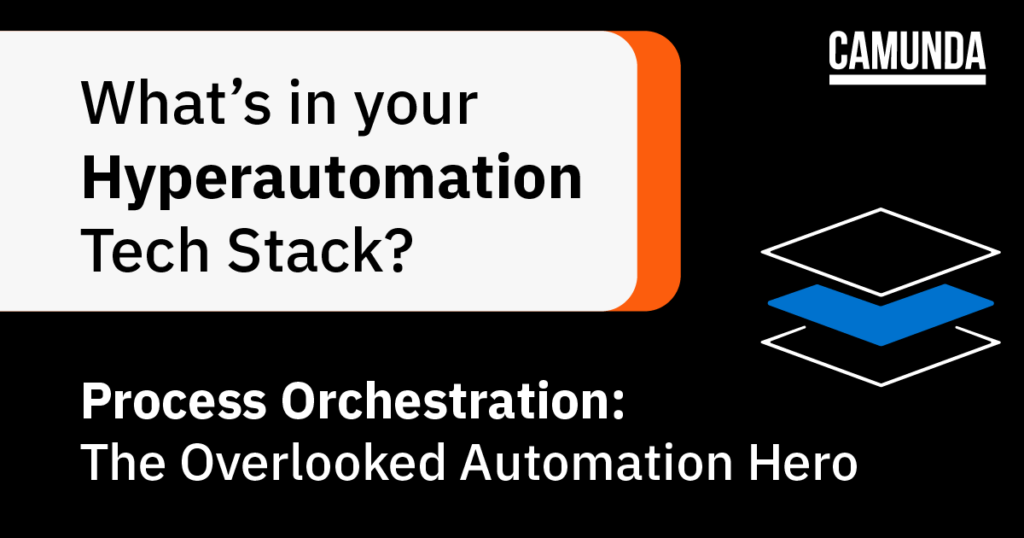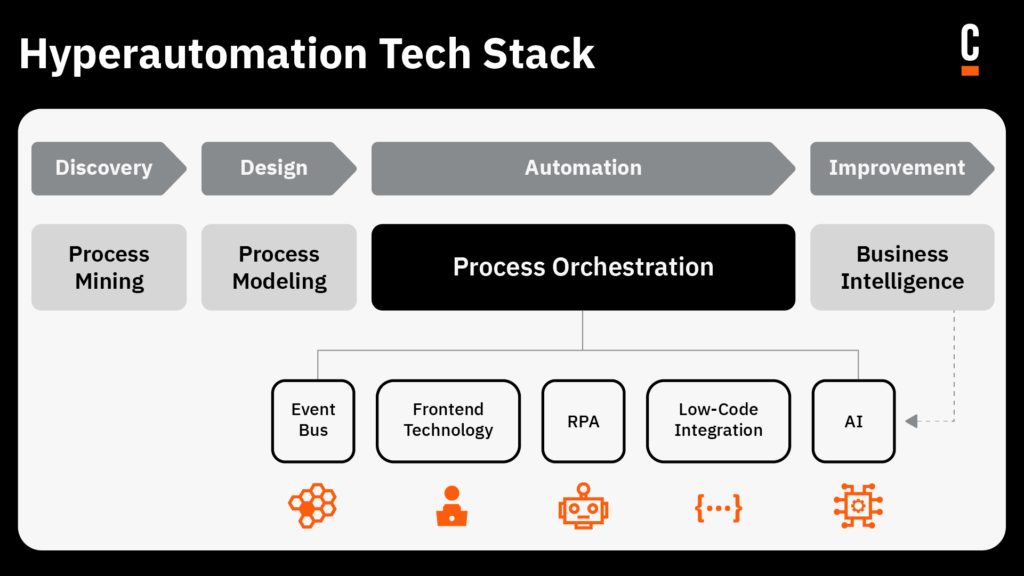If you ask 10 companies what’s in their process automation tech stack, you’d get a pretty wide variety of answers. That’s because an organization’s approach to automation has everything to do with its existing landscape. For example, are there a lot of people-driven processes? Is the organization contending with legacy systems, cloud-based applications, or both? Where do the team’s skills fit along with the data analytics and machine learning maturity curve?
Therein lies the challenge for companies seeking a one-size-fits-all tool for process automation. While one suite ruling everything certainly seems appealing, in a modern, API-driven tech economy, monolithic automation tools are rarely successful. Many IT leaders and developers I talk to are frustrated with the lack of flexibility and developer-friendliness of process automation suites.

In most cases, hyperautomation is a much more pragmatic approach.
Gartner defines hyperautomation as “a business-driven, disciplined approach that organizations use to rapidly identify, vet, and automate as many business and IT processes as possible. Hyperautomation involves the orchestrated use of multiple technologies, tools or platforms.” In other words, process automation doesn’t hinge on a single tool’s success or failure. Instead, it’s about choosing what’s right for your organization’s people and technology systems. The operative word in Gartner’s definition is orchestrated because driving software is customizable and adaptable to its environment.
Process Orchestration: The Overlooked Automation Hero
As much as we’d all like to operate at the automation levels of an organization like Amazon, most organizations are relatively early in their process automation maturity journey. You might think that sounds crazy, since the business process management software (BPMS) category has been around for decades.
However, as companies modernize their tech stacks, undoing BPMS is often harder than starting from scratch. Many organizations turn to local automation like robotic process automation (RPA) and cloud-based integration platforms-as-a-service (iPaaS) to automate independent tasks within their applications to work around these issues. However, as time goes on and local tasks must connect to execute an end-to-end process, many organizations become frustrated with the limitations of local automation tools.
That’s where a universal process orchestrator like the Camunda Platform 8 comes in. While a process orchestration layer is almost always necessary, it’s not the only part of a process automation tech stack. It’s usually combined with other technologies to get complete coverage of an organization’s automation needs.
Organizations can be anywhere in their maturity journeys – from unwinding a legacy BPMS, to patching together disparate RPA bots, to starting process automation from scratch. Regardless of where they are in their journey, a process orchestrator can drive various processes between people, systems, and devices (agnostic of where they originate). This means the universal process orchestrator can tie together SaaS applications, microservices, and legacy applications, as well as the devices and people in the automation loop.
Think of an orchestration layer as the “brain.” (Some organizations may choose to add AI for process execution to their stack to make their implementation even “smarter.”) An event streaming platform such as Apache Kafka serves as a sort of “central nervous system” that pushes and pulls data between the various connected people, systems and devices in a process automation loop (or the “muscle”).
The Typical Hyperautomation Tech Stack
So what technologies do IT leaders typically use to achieve hyperautomation at scale? Here are some of the tools we commonly see within organizations of all maturity levels:
Horizontally complementary
Process Mining
- Celonis
- Minit
- Apromore
Process Modeling
- Camunda Modeler
- Signavio
Universal Process Orchestrator: The central driving software connecting processes between people, systems and devices.
BI and Analytics Tools: These tools can aggregate historical data from the universal process orchestrator for reporting and other analytical consumption.
- Camunda Optimize
- Tableau
- Snowflake
Vertically complementary
AI for Process Execution: AutoML platforms and home-built machine learning models can play a role in informing processes, as well as determining how they continuously operate.
- DataRobot
- H2O.ai
Event Stream Processing: An engine that pushes and pulls data from various applications to the universal process orchestrator.
- Apache Kafka
RPA: Software to build local automations for human or digital tasks.
- UiPath
- Automation Anywhere
- Blueprism
iPaaS: Integration platforms-as-a-service standardize how SaaS applications are integrated into the rest of the organization.
- Workato
- Zapier
- Boomi
The Collaborative Stack: These tools help alert users in the automation loop about tasks, deadlines, and status, and let them complete their tasks by submitting information that will be processed.
- Camunda Tasklist
- Asana
- Slack
- Microsoft Teams

Need Help Getting Started?
Camunda’s team of experts can help you implement a standards-based approach to universal process orchestration and automation. Starting with a proof of concept, our team can design a process automation approach that works for your unique set of people, systems, and technology.
Learn more at camunda.com or contact Camunda to get started.
Editor’s Note: This post has been updated slightly to reflect the launch of our our cloud-native solution for process orchestration, Camunda Platform 8, in April 2022
